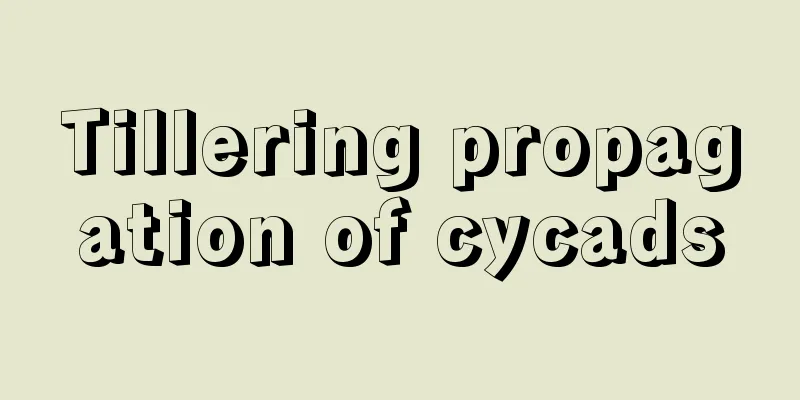Tillering propagation of cycads

Tillering time of cycadsIt is suitable to be carried out between January and February in early spring. Extracting the tiller buds of Cycas revolutaThe germination sites of Cycas revoluta tillers are concentrated at the base and trunk of the stem. It is appropriate to select plump tillers that are more than 3 years old or have 4 or 5 leaves as breeding materials. Be careful not to choose sucker buds that are too tender as they are difficult to survive. Use a sharp knife to cut the tiller buds from the base. Pay close attention and be careful when cutting to minimize damage to the stem bark. The rooted tiller buds can be directly planted in a well-drained and breathable culture soil rich in humus for management. If the tiller buds have not taken root, they should be placed in a cool and ventilated place for about 2 or 3 days, and then the rooting treatment can be carried out after the incision is slightly dry. Rooting of Cycas revoluta It is best to treat the wound before planting to prevent it from rotting. Generally, you can apply wood ash, sulfur powder, etc. Then plant it in plain sand with the depth of the substrate about half the height of the tiller buds. Water it once and place it in a well-lit place indoors for maintenance. Generally, new roots will sprout in about 2 months, and 1-2 new leaves will grow in about 3-4 months. Transplanting of Cycas revolutaAfter all the new leaves have unfolded, you can move them into the culture soil for management. The culture soil is generally made of leaf mold, mycorrhizal soil, river sand and calcium magnesium phosphate fertilizer in a ratio of 9:4:6:1. Management of Cycas revoluta after tilleringCycads love light, so it is necessary to ensure that they have sufficient light, especially during the leaf-growing period, they must be placed in the sun, otherwise the new leaves will become thin and long, reducing their ornamental value. As for watering, just don’t water unless the soil is dry, and water thoroughly when you do water. At the same time, be careful to avoid water accumulation in the pot. Cycas can tolerate barrenness and does not have high requirements for fertility. In terms of fertilization, thin pancake fertilizer water can be applied about once a month during the cycad seedling period. During its vigorous growth period, 0.3% urea liquid fertilizer and 0.2% potassium dihydrogen phosphate liquid fertilizer can be applied alternately every 20 days or so. Foliar topdressing can also be carried out with 0.1% ferrous sulfate liquid fertilizer. |
>>: How to fertilize Cycas revoluta
Recommend
When is the right time to repot Chunlan?
Spring orchid repotting time After long-term plan...
Can green radish be propagated by cuttings in winter? How much soil should be buried for cuttings?
1. Is it possible to take cuttings in winter? Sin...
What are the cultivation methods and precautions of drug-absorbing grass
Method of cultivating drug-absorbing grass The dr...
Cutting propagation method of Clerodendrum thomsoniae
time The best time for propagation of Clerodendru...
How to make spring orchid bloom on New Year's Day
1. Flowering period Spring orchid, as the name su...
How to propagate small-fruited roses
1. Sowing method Sowing is the most basic method ...
The difference between jasmine and forsythia
1. Difference of blades The leaves of Forsythia a...
What is the difference between the dragon god tree and the celestial ruler?
The difference between the dragon god wood and th...
The top nine Chinese herbs
First place: Dendrobium officinale "Shennong...
The efficacy and function of Yi Dian Hong
The efficacy and function of Yi Dian Hong From a ...
Stevia cultivation methods and precautions
1. Maintenance methods 1. Temperature: Stevia has...
How to breed Boer goats
Boer goats are native to South Africa and are kno...
What soil is suitable for growing sunflowers?
Sunflower soil Sunflowers are very flexible in th...
Pest control of nail orchid
Sclerotium rolfsii Symptoms The disease mostly oc...
How to propagate the money tree by cuttings?
The money tree is a succulent plant with round an...









